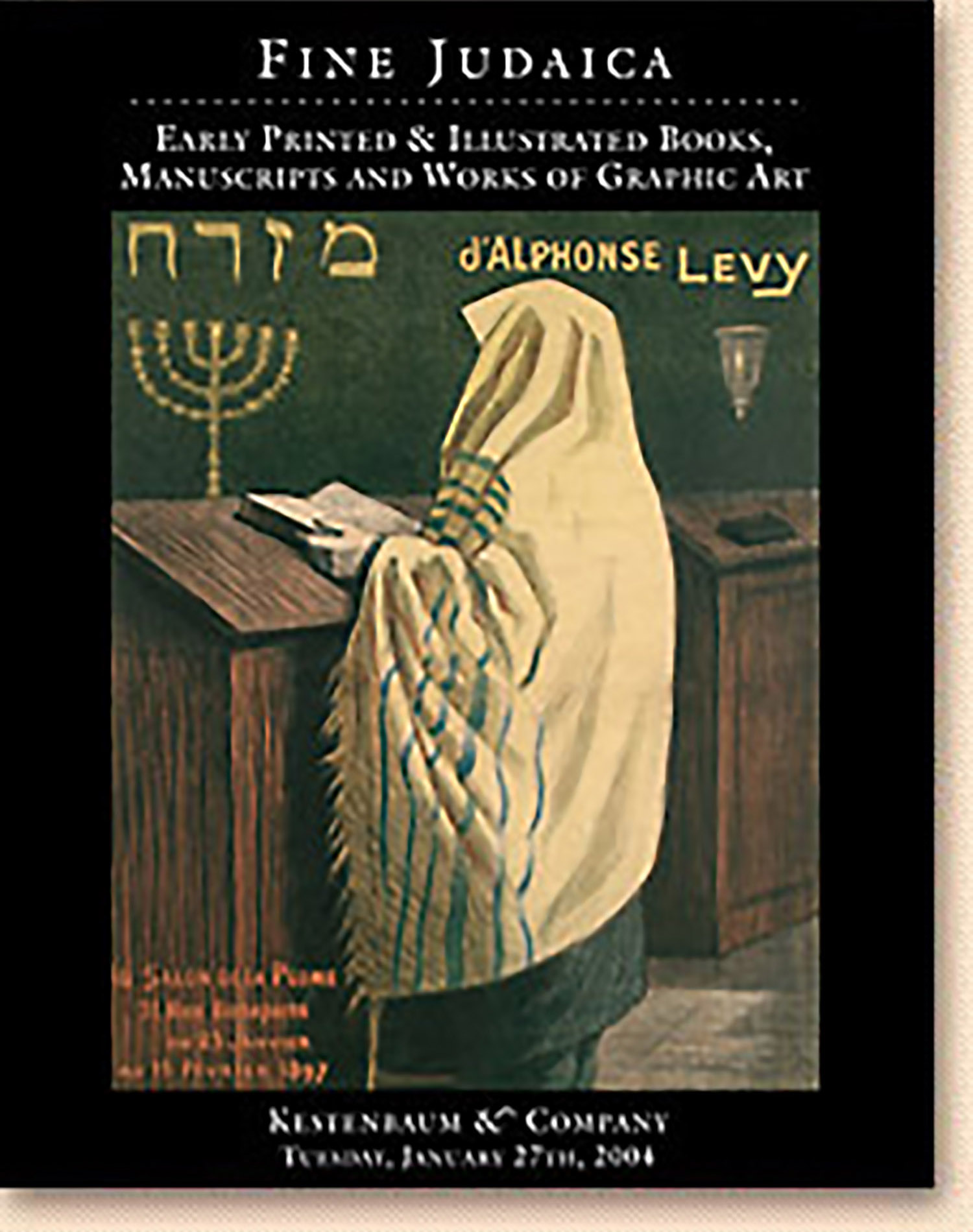Sepher ha-Peli’ah (Attributed to Rabbi Nechunyah ben Hakaneh)

AUCTION 22 |
Tuesday, January 27th,
2004 at 1:00
Fine Judaica: Printed Books, Manuscripts and Works of Graphic Art Including Holy Land Maps, Illustrated Books, Photography and Graphic Art from The Collection of Daniel M. Friedenberg of Greenwich, Conn
Lot 226
(KABBALAH).
Sepher ha-Peli’ah (Attributed to Rabbi Nechunyah ben Hakaneh)
(Jerusalem): 17th century
Est: $2,000 - $3,000
Sepher ha-Peliah, on the Torah portion of Bereshith, was first published in Koretz (Korzec) in 1784. For many years it, together with its companion volume Sepher Ha-Kaneh, were attributed to R. Avigdor Kara of Prague. Of late, scholars tend to attribute both works to an anonymous Byzantine (Greek) author.
Sepher ha-Peli’ah was held in high esteem by the sixteenth-century kabbalists of Safed. This is evidenced by the recent discovery of a fragment of a lengthy commentary on Sepher ha-Peli’ah by R. Moses ben Joseph Trani (MaBIT) (JNUL ms. 8º 5637). See facsimile in Meir Benayahu, Yosef Behiri (Jerusalem, 1991), p. 133.
In 1980, Israel Ta-Shema published a groundbreaking article concerning the origin of Sepher ha-Peli’ah. Based on the fact that the prayers therein follow the Romaniote (Byzantine or Greek rite)—coupled with the fact that the first authors to cite from Sepher ha-Peli’ah were Jews of the region, R. Elijah Mizrachi (Responsa R. Elijah Mizrachi) and R. Moses of Kiev (Shoshan Sodoth)—Ta-Shema was also able to establish a Byzantine provenance. That would make the date of composition mid-fifteenth century. See I. Ta-Shema, “Where were the Books ha-Kaneh and Ha-Pliah Composed?” in: Studies in the History of Jewish Society in the Middle Ages and in the Modern Period (Jacob Katz Festschrift) (Jerusalem, 1980), pp. 56-63. In that same year (1980), Michal Kushnir-Oron submitted to Hebrew University her doctoral dissertation, “The Kabbalistic Books ha-Peliah and ha-Qanne: Elements, Religious and Social Views, and Literary Design.”
It is recorded that the only books of kabbalah studied by the pseudo-messiah Shabbetai Zevi in his formative years in Izmir were Zohar and Sepher ha-Kaneh (the collective name for both Sepher ha-Kaneh and Sepher ha-Peli’ah). Prof. Moshe Idel finds this of enormous significance because Sepher ha-Peli’ah contains an entire work of Abraham Abulafia, Sepher Gan Na’ul. It also quotes verbatim from Abulafia’s Sepher Hayei ha-Nefesh a lengthy discussion about the nature of prophecy, the combinations of the letters of the various Divine names and their pronunciation as a way to be in contact with God. Shabbetai Zevi’s infamous act of blasphemy, for which he was excommunicated, was pronouncing aloud in the synagogue the four-lettered Divine name. M. Idel, Messianic Mystics (New Haven, 1998), pp. 185-187.
Perhaps for this reason, Sepher ha-Peli’ah enjoyed great popularity in Sabbatian circles, as attested to by the many Sabbatian manuscripts of the work. See Meir Benayahu, The Shabbatean Movement in Greece (Jerusalem, 1971-1977), pp. 350-354 (Hebrew).
A new edition of Sepher ha-Pe’iah (in a set called “Torath ha-Kaneh”) was published in Jerusalem, 1997. Our ms. reaches as far as the bottom of the first column on p. 655 of the printed edition (out of a total of 670 double-columned pp.). We are also missing the author’s introduction (“Said Elkanah son of Yeroham son of Avigdor…”) which runs a couple of pages.
